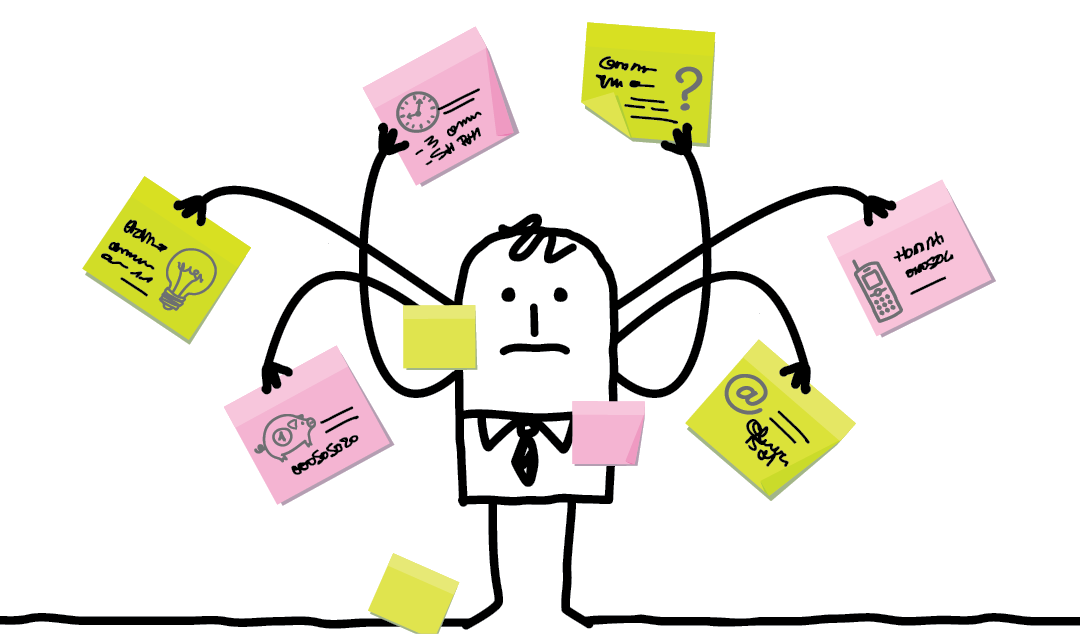One foot in front of the other. One step at a time. You walk this way, but do you live this way? In this world of constantly changing demands and deadlines, multitasking is likely your mode of operation. How could it not be when there are so many things competing for your time and attention?
But, alas, how’s that working for you? Are you truly able to complete those important priorities in a way that leaves you feeling satisfied and accomplished? Or is there part of you that’s crossing your fingers, hoping you got enough of it right and didn’t miss anything significant? And when you’re multitasking, how are your brain and body feeling in that endless mix of activity? Disheveled, confused, anxious, activated, overloaded?
In my former corporate days, I thought I was the queen of multitasking. I even had an invisible gold crown I used to wear. The sheer color of the crown should have told me something was off—I have a serious aversion to the color gold—but I was too busy buzzing around mastering all my tasks . . . or so I thought.
You see, the brain can’t go in a million different directions. While it can take in millions of bits of information every second—about 40 million—it can only process 50 of those. A measly 50. That’s a lot of information going unnoticed. And when you’re zipping around, quickly whipping your attention from one thing to the other, everything gets blurrier and more random.
There are lots of studies out there proving that multitasking doesn’t work. I’ll skip the details here (feel free to Google) and jump right ahead to one strategy that does work—an acronym I’ve come up with that’s a great reminder to stay present with the task at hand: STEP, or Single Task Enhances Productivity.
Just like taking one step when you walk, STEP when you set out to accomplish the day’s goals. Pay attention with intention to the one thing or person in front of you. Ask yourself:
What’s really here?
What am I doing with it?
What is needed?
With your attention focused, you stay tuned in and present, and remain on task until you decide it’s time to move on to the next thing. You then pay attention to that task or person until it’s time to move on to the next. One step, one moment, one activity at a time.
With multitasking, not only are you expending a lot of unnecessary time and energy going back and forth trying to get things done but you also aren’t going deep into any one thing. Attention remains at the surface, like a rock skipping over water—many ripples without any depth.
This rippling has you missing opportunities for:
A deeper connection: What did my daughter really mean by that comment?
Appropriate inquiry: There were so many questions I didn’t think to ask before I agreed to that deadline change.
Actual task mastery: I wasted SO much of my day on meaningless things.
A wider view: How did I not see that coming?
Wasted energy: Geez, no wonder I’m so tired by the end of the day even though I feel like I got nothing done!
With STEP, you tune in and attend to what’s right in front of you by using the calm presence of body and mind to be discerning about what’s truly needed (and not needed). You get to take charge of where your attention goes and can put distractions in their place. Priorities are attended to, and people are heard, seen, and felt. The process has a chance to flow with minimal disruption, and projects come to fruition. You feel pleasant, proud, and prepared for what’s next.
So, during this busy time of year—kids going back to school, routines and schedules changing, committees and groups beginning to gather again, work initiatives taking off, home projects begging for attention before winter—STEP your way to a more satisfying method of managing your life.
One thing at a time, with presence and purpose. This is how to get things done and still have lots of energy for the fabulous you.


 View Print Edition
View Print Edition